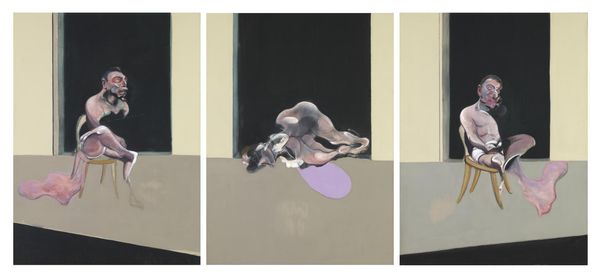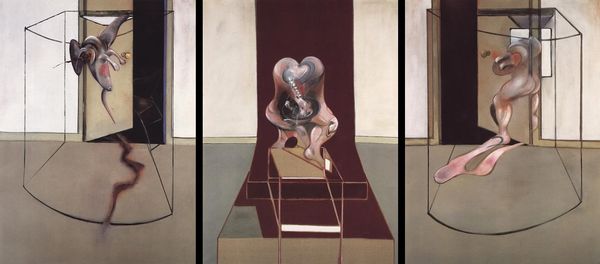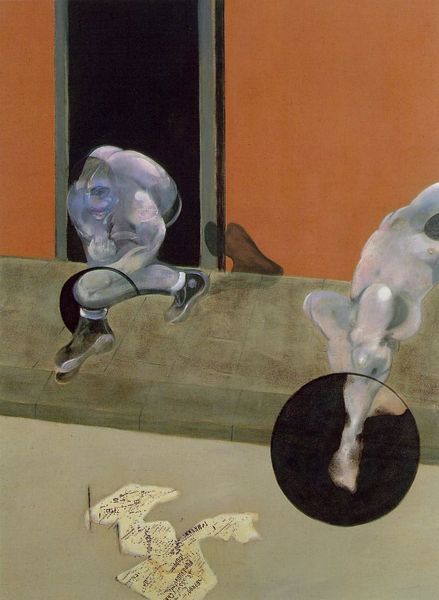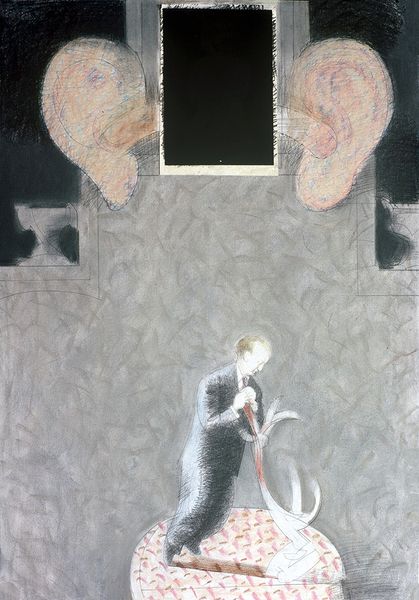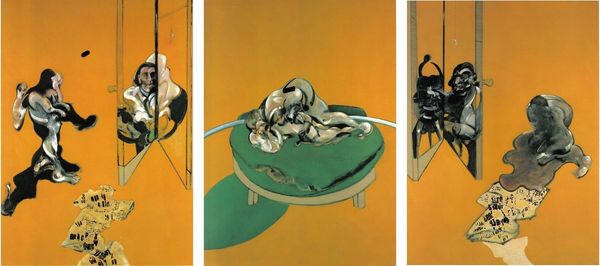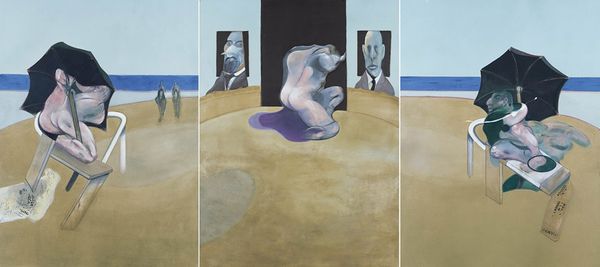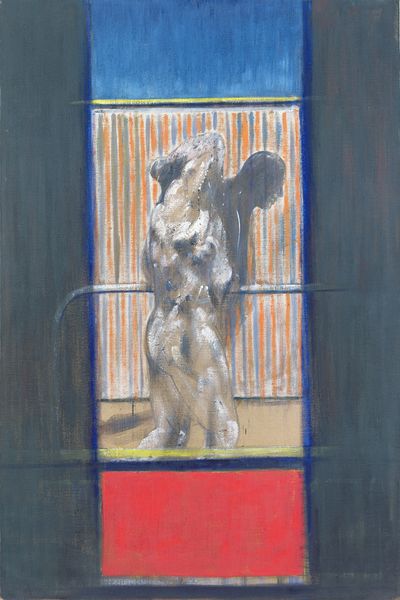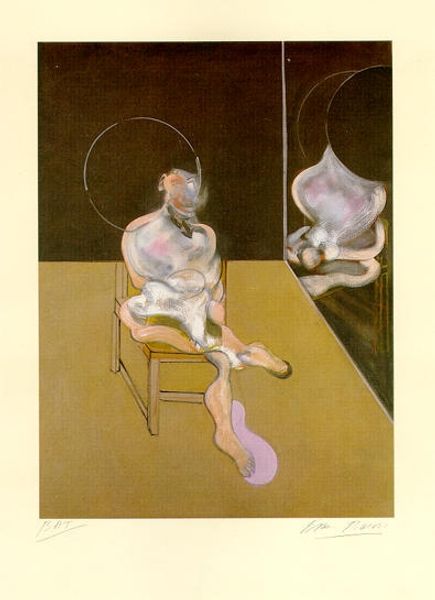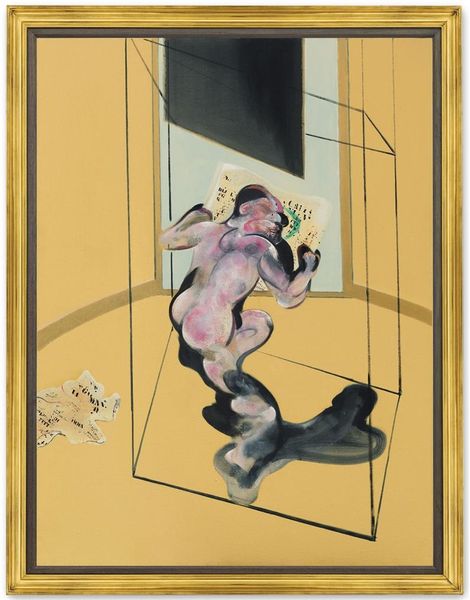
Dimensions: support: 1981 x 1473 mm frame: 2175 x 1668 x 98 mm
Copyright: © Estate of Francis Bacon | CC-BY-NC-ND 4.0 DEED, Photo: Tate
Editor: Here we have Francis Bacon's "Three Figures and Portrait," whose date is unknown, currently at Tate Britain. The figures seem trapped, almost like butchered meat. What do you see in this piece? Curator: The materiality screams post-war anxiety. Bacon's use of fleshy tones and distorted forms isn't just aesthetic; it reflects the socio-economic reality of a world grappling with industrial horrors and mass production. Consider the act of painting itself – the physical manipulation of pigment mirroring the manipulation of bodies in factories. Editor: So, the process is the point? Curator: Partly. It's about the means by which these images, these bodies, come into being and how that speaks to broader systems of power and consumption. Editor: That makes me look at it in a completely different way. Thanks! Curator: My pleasure.
Comments
tatebritain 8 months ago
⋮
http://www.tate.org.uk/art/artworks/bacon-three-figures-and-portrait-t02112
Join the conversation
Join millions of artists and users on Artera today and experience the ultimate creative platform.
tatebritain 8 months ago
⋮
Two dynamic figures and bird-like creature are placed within a claustrophobic setting. The three figures are watched over by a portrait. This work is usually seen as an image of suffering. One - and possibly both - of the twisting human figures have been identified as George Dyer, Bacon’s companion, lover and muse. Dyer killed himself in 1971, but Bacon continued to portray him after his death. The bird-like form in the foreground, with its snarling human mouth, has been linked to the Furies, goddesses of vengeance in Greek mythology. Gallery label, June 2021
